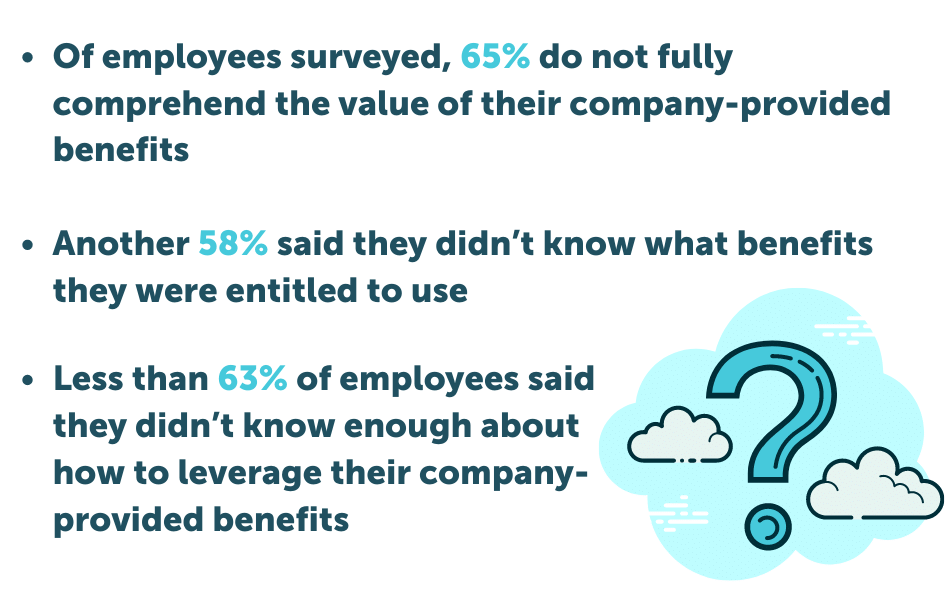69% of employees say they would work harder if they felt better recognized for their efforts. However, recognition can mean various things to different people. Some people receive appreciation through acts of service in the workplace, while others prefer words of affirmation or quality time. Therefore, you might be wondering how you can foster a workplace environment dedicated to individual employees’ needs.
We’ve released this blog series focused on Dr. Gary Chapman’s 5 Love Languages to help answer the question above and get into the Valentine’s Day spirit. Each blog discusses how businesses can use one of the five love languages to communicate effectively with their staff and improve the employer-employee relationship. This particular article focuses on acts of service in the workplace.
Ask How We Can Make Payroll & HR Easier for You
What are the 5 Love Languages?
If you’re not familiar, Dr. Chapman’s concept of the five love languages states that every person expresses or receives love in one of five ways. A person’s love language can tell you a lot about how they think, act, and prefer to be treated in the workplace. Therefore, understanding each love language can help you increase workforce appreciation and team satisfaction.
- Quality Time: People who prefer this love language value time spent with them – they want to be seen.
- Receiving Gifts: This doesn’t mean that people value monetary things; they want to know that you’re thinking about them.
- Acts of Service: A person who values Acts of Service needs to see action over being told something good.
- Words of Affirmation: Those who prefer words of affirmation need to hear positive things about me.
- Physical Touch: People who communicate through Physical Touch simply want to feel connected to those around them.
The love languages don’t apply to just romantic relationships. Your relationships with your family, friends, children, and, yes, coworkers all use some combination of Dr. Chapman’s five love languages.
Examples of the 5 Love Languages in the Workplace
To create a culture of camaraderie among employees and managers, it’s essential t to understand their emotional needs. Here we’ve broken down the five love languages into office examples that can help each worker succeed:
- Quality Time = Personalized one-on-one meetings with an employee about their performance.
- Receiving Gifts = Offering employees a reward or bonus for a well-done job.
- Acts of Service = Providing benefits to an employee.
- Words of Affirmation = Publicly saying, “Great job!” during a team meeting.
- Physical Touch = Giving an employee a high-five or a fist bump for a job well done.
Now that you understand the five love languages at work let’s discuss the specific role acts of service plays in a business setting.
The Acts of Service Love Language
In this part of our five-part series, we apply the love language Acts of Service to the concept of workplace motivation and specifically to offering comprehensive employee benefits. As you read, you will find it’s advantageous to provide various benefits to your workforce, especially if acts of service are their primary love language. When you begin to speak someone’s love language, you find they are more receptive to feedback and employer loyalty.
What Makes Employee Benefits an Act of Service?
Employees are more productive when their employers take care of them. That’s not just speculation. It’s scientifically proven. According to a neuroscience study mentioned by Inc., employees crave three things from their employers:
- That they are safe
- That they belong
- That they matter
When employees receive these three things from their workplace, their productivity increases and they feel protected. That’s where benefits come in. Workplace benefits are an act of service because they provide security and safety to employees.
You probably have heard the saying, “actions speak louder than words.” When it comes to offering benefits, this saying rings valid for employees. Workers want to know their job loyalty is not one-sided. Therefore, the best way to show employees they are in an equal partnership is by providing them with comprehensive benefits.
The Importance of Benefits to Employees
According to an annual employee benefits survey conducted by SHRM, employers were more likely to increase offerings than decrease them. Twenty percent of employers reported expanded offerings for health-related benefits and wellness benefits alone. Organizations need to provide a well-rounded benefits package to attract and retain staff.
Part of an employee’s job-hunting process is checking out the benefits package a company offers. Businesses that provide competitive employee perks show future and current staff how much they are valued. When employees know their company cares about their health and well-being, companies can gain a competitive advantage over other companies vying for the same candidates.
How Employee Benefits and Motivation are Connected
How many times have you thought in any relationship: “Don’t tell me you care; show me”? The same ideology applies to the relationship an employee has with their workplace. Especially if they value the acts of service love language at work. It’s not enough for employers to promise a great culture; they must show their employees that they care.
Retaining and motivating employees goes hand-in-hand. To retain employees, they must be encouraged to stay, and employers can achieve this through the acts of service love language in the workplace.
So how can you show the acts of service love language at work? Employers saw a 62% increase in retention when companies invested in more benefits and perks. The side effects of motivated employees include:
- Increased employee commitment
- Improved employee satisfaction
- Ongoing employee development
Communicating Benefit Offerings to Employees
Merely investing in employee benefits is not enough. How HR communicates these benefits has a significant impact on how employees respond to them.
Don’t assume that just because you sent an email out about available offerings, your employees understand them. Don’t believe us? Here are a few statistics to consider:

Understanding What Benefits Employees Want
Another way to motivate employees through benefits is by finding out what they want as benefits. Employee benefits include more than just health insurance options; they can consist of pet insurance, student loan repayments, or provided lunches. If you’re struggling to understand which benefits motivate your employees, perform an HR audit and send out a survey asking employees what they want. Their answers may surprise you.
We cannot overstate the impact of employee benefits on work motivation and productivity. Only 13% of employees are engaged at work, which means that up to 87% of your employees could leave your organization without thought. Can you imagine what the cost of replacing more than half of your employees would be? You could probably pay out your benefits package for the year, with change left to spare.
Offer Benefits Packages That Motivate Employees
So what benefits should you offer to your employees? Providing essential benefits such as health coverage, paid time off (PTO), and retirement is a great start, but is it enough to retain your top talent?
According to a national survey completed by Jobvite, 25% of workers have accessed employer mental health benefits, and that number is steadily increasing. What types of benefits do employees value the most if this is the case? We looked at a compilation of benefits that attract top talent and best demonstrate examples of acts of service at work. Here are some benefits offerings to consider:
- Professional development and training
- Paid maternity/paternity leave (including PTO for adoptions, foster, and surrogacy)
- Travel stipends
- Paid time off (vacation, sick, and personal time off)
- Paid volunteer time off
- Retirement savings and planning
- Workplace perks (casual dress codes, free food, and drinks)
- Tuition reimbursement
- Wellness programs
- Flexible pay, hours, and options to work from home
- Personalized healthcare
- Signing bonuses
What Employers Gain From Better Employee Benefits
Attract New Talent: By offering a more desirable and comprehensive benefits package, your company will stand out, and prospective employees will notice.
Retain Existing Employees:78% of employees reported they’re more likely to stay with an employer because of their benefits program. Keeping employees is more cost-effective than replacing and training new ones. Creating a higher level of job satisfaction minimizes your turnover rate, saving you time and money.
Boost Employee Morale: When employees are satisfied with their benefits, they are happy with their job. Showing that you care about your staff creates job loyalty and improves employee motivation.
Increase New Customer Growth: When employees are satisfied with their workplace, they are more likely to refer their workplace to their friends and family. Similarly, a happy employee is more likely to have a positive interaction with a customer.
Improve Employee Health: 56% of employees who utilized health and wellness programs at work had fewer sick days than before. These employees are more likely to go to the doctor for regular check-ups and take more preventative measures to stay healthy. Furthermore, offering sick leave can prevent contagious employees from infecting others, leading to less absenteeism company-wide.
Improve Job Performance: Employees who said their organization provided health and well-being benefits were 11% more engaged than those without such offerings. Happier employees are more productive employees. They’re more willing to put their best foot forward day in and day out when they work for a company that shows appreciation in the workplace.
The ROI of Workplace Benefits
Benefits are second only to compensation when it comes to retaining employees. While salary and benefits are the most significant operating expenses an organization has, they also have the highest return on investment (ROI). This correlation means employees are worth the investment in providing extensive benefits to keep them motivated.
Acts of Service Show Employees They Matter
The greatest act of service companies can demonstrate to their workers is offering a benefits package with their employees’ best interests in mind. Consider auditing your current employee benefits packages, as well as incorporating employee feedback on current and future benefits options. Show your employees their organization cares about their well-being by offering various types of acts of service at work.
When you show employees you care, they are more likely to reciprocate the gesture in the form of increased workforce productivity, retention, and engagement. Ultimately, serving your employees helps them and your business.



